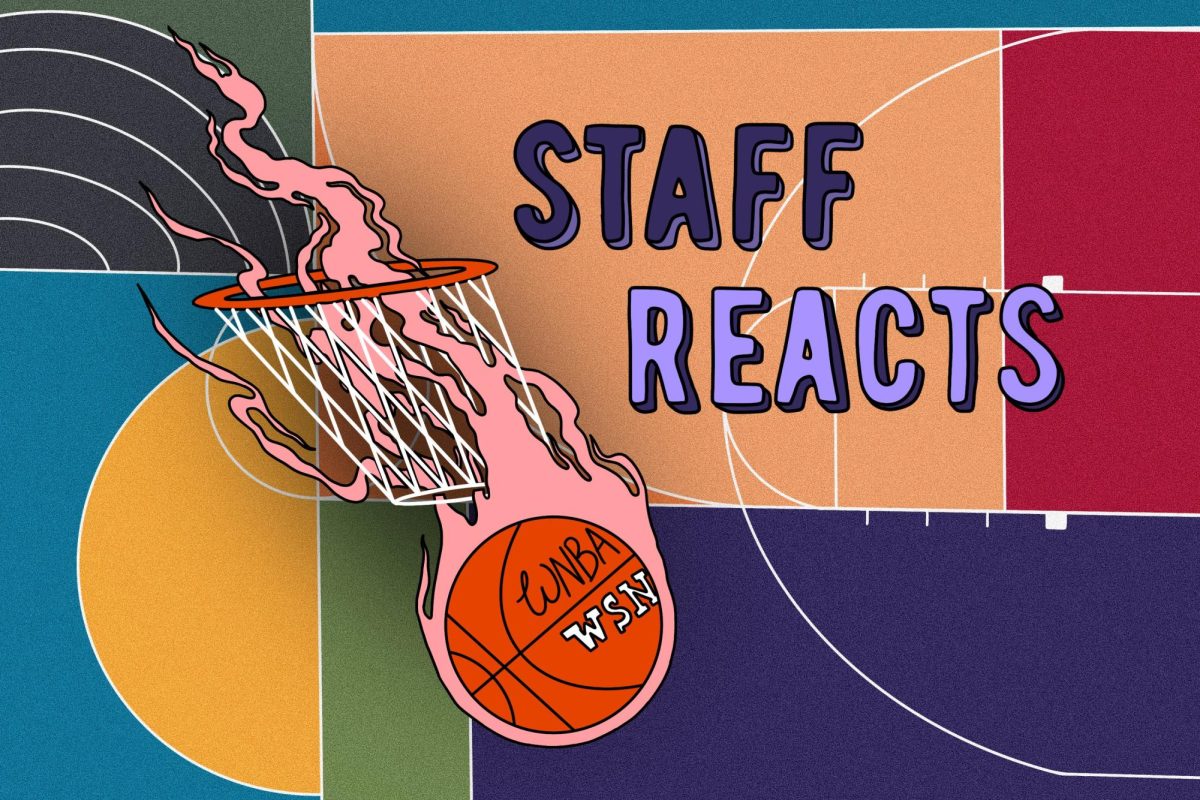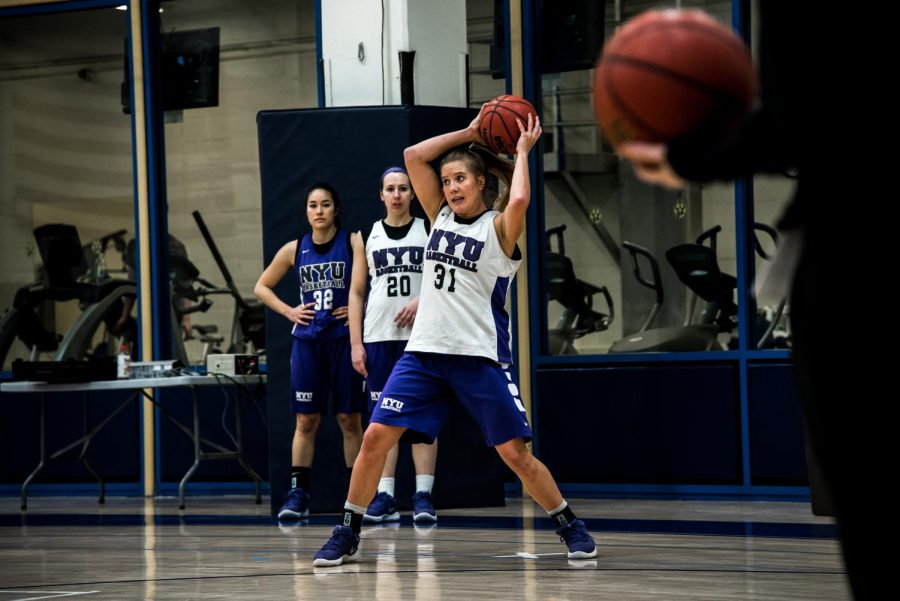Sports Analytics Seeps Into NYU Locker Rooms
The women’s basketball team during a practice in Feb. 2018. (Photo by Sam Klein)
September 17, 2018
One of the most significant trends in sports the past decade has been the increased emphasis on the use of analytics. Initially frowned upon and derided, analytics quickly became a way for teams to gain an edge on their competitors. For professional teams, mathematicians have become just as valuable as traditional scouts.
In soccer, clubs realized that crossing the ball was one of the most inefficient ways to try to score. In basketball, teams began to play the percentages, encouraging players to increase their 3-point attempts and to limit the number of mid-range shots. Over the course of a 48-minute game, the math favors the team that takes more 3-point shots than mid-range jump shots, even though the latter had a slightly higher chance of going in.
Coach Dagan Nelson of the NYU men’s basketball team recognizes that the use of analytics has altered the way that people study and think about basketball.
“Over the last decade, from 2010, the use of analytics has risen dramatically,” Nelson said.
As a participant in the analytics revolution, he has witnessed the benefits of using statistical information and has adjusted how he strategizes for games.
“We certainly look at numbers,” Nelson explained. “We look at both team-wide trends but also data on the individual players.”
Technology companies that Nelson utilizes, such as Synergy Sports Technology, provide statistics not included in traditional box scores — for instance, through Synergy, coaches can track the players’ preferred spots for shots, their efficiency from different parts of the court and a player’s true shooting percentage, which factors in free throws and 3-point field goals.
By looking at this data, Nelson can alter the team’s strategy to account for the different tendencies of the opposing team’s players. For instance, Nelson notes that there has been a significant increase in the number of players that take about 60 percent of their shots from the three. As a result, drills that focus on improving the players’ perimeter defense have become a more important part of practice.
Moreover, the data can help Nelson identify certain exploitable traits in his players, which he can use to help them become more well-rounded.
With experience employing analytics to formulate his strategy, Nelson knows that there is a point when data analysis becomes detrimental and where more traditional forms of scouting and player evaluation, such as game film, can supplement statistical analysis,
Although Nelson recognizes the value of analytics, he is also cognizant of the dangers of overreliance on data.
“It is important to avoid paralysis through analysis,” Nelson said.
A version of this story appeared in the Monday, Sept. 17 print edition. Email Kevin Ryu at [email protected].























































































































































